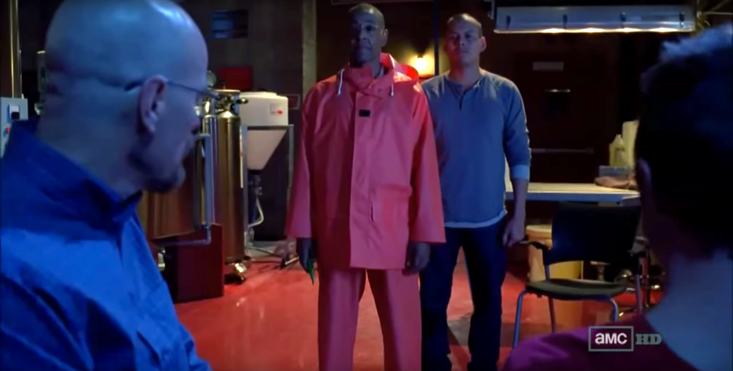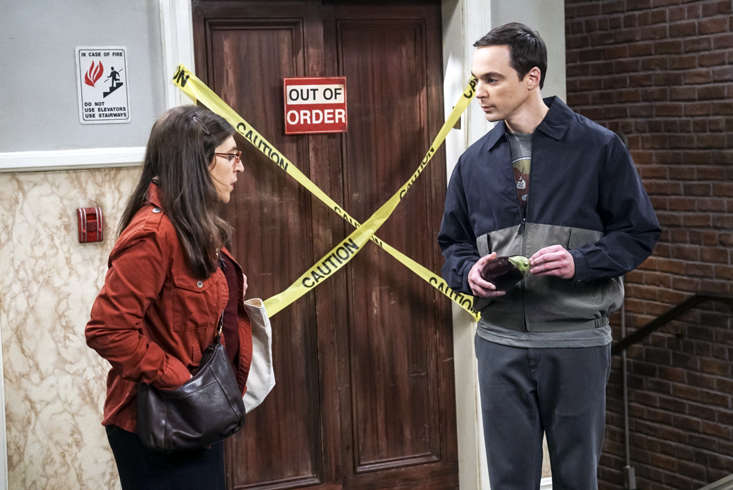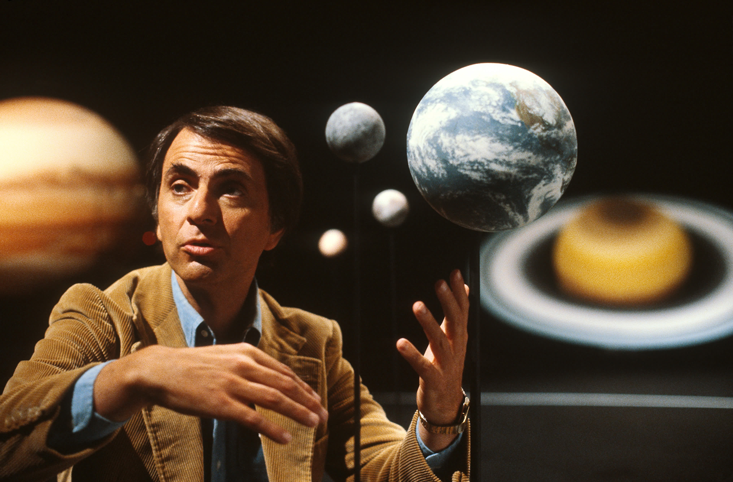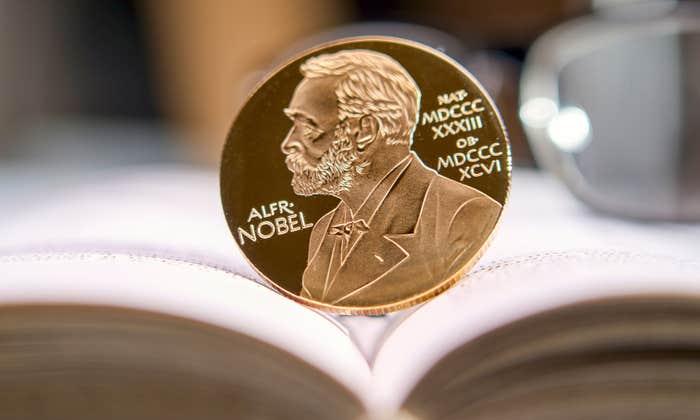At the start of the fourth season of Breaking Bad, Walter White angrily watches an inexperienced meth cook make his trademark blue meth. Walter is afraid that mob boss Gus Fring is going to kill him, so he desperately explains that Fring can’t make the “product” without him. When the amateur cook, Victor, says he knows every step of the process, Walter snarls, “So, please, tell me. Catalytic hydrogenation—is it protic or aprotic? Because I forget. And if our reduction is not stereospecific, then how can our product be enantiomerically pure?”
Walter’s scientific knowledge saves him. The ruthless Fring slits Victor’s throat with a box cutter.
Over the course of Breaking Bad, Walter unravels from a frustrated chemistry teacher to a brutal criminal. But no matter how horrible he gets, viewers can’t help but relate to and care about him. Much of this sense of connection comes from lead actor Bryan Cranston’s skillful portrayal of a troubled family man, but it was Breaking Bad creator and head writer Vince Gilligan who conceived the character. He imagined a scientist who is mad without turning him into a mad scientist.

Part of Walter’s appeal is he knows his science. “Vince tried to get the chemistry correct as much as he could, just to make it more believable,” says Donna Nelson, a professor of chemistry at the University of Oklahoma. As Breaking Bad’s science advisor, Nelson helped him achieve that goal. (Her favorite scene in the series is Walter’s sarcastic rejoinder to Victor.) Although they were careful to never give viewers the exact or complete recipe for meth, the chemical reactions are real, and if someone were to synthesize methamphetamine by altering other chemical’s structures, they would indeed want to make sure the end product is enantiomerically pure: The three-dimensional structure of methamphetamine works on the brain in a certain way to get you high, but the enantiomer, or mirror image, of the same molecule does not.
Scientists were smart and rational, but touched with a sense of evil and peril.
Breaking Bad is among a host of acclaimed shows in recent times with scientists as protagonists. Westworld, Orphan Black, Masters of Sex, CSI, Bones, House, The Big Bang Theory, and several others have all written scientists as diverse and complex humans who have almost nothing in common with the scientists I saw in the 1980s movies I watched as a kid. Gone is the lone genius with a shed full of goofy contraptions and bubbling liquids. Today’s fictional researchers work in realistic labs, with high-tech equipment, and in teams with others. Their dialogue is scattered with words from the latest scientific literature, and they have so much depth and personality that they carry entire shows.
The change in TV offers insight into the image and impact of scientists today, say communication scholars. Although recent headlines may have been dominated by people who bend scientific facts into the molds of their personal ideologies, surveys reveal a deep public esteem for scientists. Viewers now want and demand their scientists to be realistic, and what the viewer wants, Hollywood delivers. As a result, scientists on screen have evolved from stereotypes and villains to credible and positive characters, due in part to scientists themselves, anxious to be part of the action and the public’s education.
In the United States, the attitude toward the benefits of science has been consistently positive over the past 60 years, thanks mainly to advances in health and technology. In 2012, a survey by the National Science Foundation, a U.S. federal agency and funding group, found that 72 percent of Americans believed that science’s benefits outweighed the harm. Although Americans’ reservations about the risks and harms of science have also been almost constant during this period, there was a time during the nuclear-fear-filled ’70s and early ’80s when people were more concerned about the harm science could do. The Day After, a 1983 TV movie about the aftermath of a nuclear war between the U.S. and the Soviet Union, reportedly remains the highest rated TV movie ever.
In 1985, George Gerbner, a communications professor at the Annenberg School of Communications at the University of Pennsylvania, led a remarkably detailed study of scientist characters on TV and their impact on culture. Scientists were smart and rational, the report noted, but of all the occupational roles on TV, scientists were the least sociable. In fact, 1 in 6 scientists were portrayed as villains. All in all, the report stated, scientists “presented an image lacking in some respects only in comparison to doctors and other professionals than in absolute terms. But it is a somewhat foreboding image, touched with a sense of evil, trouble, and peril.” Apparently those characters had a negative impact on viewers, especially “heavy viewers,” people who watched four or more hours of TV a day, cultivating an unfavorable orientation toward science.

But things have been looking up for unsociable TV scientists touched with evil. A 2011 study by Anthony Dudo and colleagues, published in Communication Research, takes up where Gerbner and colleagues left off. The authors compared several professions portrayed in prime-time TV shows and found that in the period from 2000 to 2008, only 3 percent of scientist characters were considered “bad,” less than any other TV profession in that period. Portrayals of TV scientists, the authors noted, are mostly positive, and what’s more, heavy viewing can “enhance attitudes toward science for people who share common experiences.”
What happened? Roslynn Haynes, an adjunct associate professor at the School of English, Media and Performing Arts of the University of New South Wales, has studied the representation of scientists in fiction. The world has changed since the 1960s, she says, when one-dimensional mad scientists or goofy side characters ruled. We have different things to worry about these days: political corruption, terrorism, climate change. “We don’t need the scientists to be the bad guys anymore,” says Haynes. “There are so many other bad guys now.” She points out that scientists are now often the ones we turn to for solutions. “We know we need scientists to fix up the mess we’re making of the planet. If there’s any hope at all, it has to come from scientists who monitor the risk and are able to find ways to overcome that risk. Whereas before, scientists were seen as part of the risk.”
Gone is the lone genius with a shed full of goofy contraptions and bubbling liquids.
Besides a general change in world events, another reason Haynes gives for the new attitude toward scientists is that we’ve had increased exposure to science through the media. Before the ’50s or ’60s, very few people would have seen a scientist. Major discoveries were mentioned in newspapers or on the radio, and there might occasionally be a public lecture or science demonstration in your town, but unless you personally knew or were a scientist, you were unlikely to come across one—certainly not on a regular basis. Television changed that.
In the period just after World War II, scientists in the United Kingdom tried to get involved with science-broadcasting decisions at the BBC. Initially the BBC resisted the attempts, says Jean-Baptiste Gouyon, a teaching fellow at the Department of Science and Technology Studies of University College London. But gradually producers came around, sensing an appetite for science in a “non-specialist audience,” Gouyon says. In 1964, the BBC aired the first broadcast of its popular science documentary program Horizon. According to its original mission statement, the show’s goal was “to provide a platform from which some of the world’s greatest scientists and philosophers can communicate their curiosity, observations and reflections and infuse into our common knowledge their changing views of the universe.”
Natural history programming was another popular way to show science on the BBC, and from 1979 onward, David Attenborough has appeared as host of several programs, taking viewers along on his travels as he describes with awe the amazing creatures he comes across. Programs like this helped change the public’s view on scientists during the ’80s and ’90s, because, as Haynes puts it, “David Attenborough is like everybody’s grandpa. Who could be frightened of him?”

In the U.S., the friendly face of science TV was Carl Sagan. His show, Cosmos: A Personal Voyage, which aired in 1980, became the most watched show in American public television history, since passed by The Civil War. Like Attenborough, Sagan was able to convey his own sense of wonder and excitement about science. He made an entire generation realize that “we’re made of star stuff,” and boosted the passion for space science that still lingered among Americans after the Space Race and Star Wars films of the preceding years.
Science documentaries have continued to be a regular part of TV programming, and in recent years have become even more appealing to audiences. “When you look at the history of Horizon, from the end of the ’90s until about 2001, there is a shift in the way that science is presented,” says Gouyon. “Instead of being critical or investigative about science, the episodes are now glorifying science.”
Meanwhile, the scientists and presenters on these programs are excited about their work, approachable, friendly, adventurous, often young, and sometimes female. “All of these things make people feel that scientists are hero figures, especially to younger people,” says Haynes. “They’re not quite like the heroes of science fiction in its early heyday of the 1930s, with astounding stories that inspired a whole generation of kids (mostly boys) to become rocket scientists—but nevertheless, they do present scientists as very attractive, exciting people.”
It didn’t take long for fictional on-screen scientists to catch up with this new attitude toward their profession. Eight years after Doc Emmett Brown sent his mad invention traveling through time in Back to the Future, scientists in Jurassic Park enthralled visitors with creatures from the past. But something was different now. Although Doc Brown’s chaotic goofiness was still acceptable for scientist characters in 1985, the paleontologists in Jurassic Park (1993) were held to a much higher standard. They did work that viewers recognized as having some root in reality: Dinosaurs, DNA, clean labs with professional lab notebooks. Although it’s not possible to retrieve viable DNA from dinosaur blood in a mosquito trapped in amber, the idea isn’t entirely implausible. Just this month, real paleontologists found a feathered, amber-encased dinosaur tail fragment, in which they detected traces of iron from its blood.
David Kirby, a senior lecturer in Science Communication Studies at the University of Manchester, and author of the 2011 book Lab Coats in Hollywood, points to Jurassic Park as the film that marked the start of the trend of scientific realism in movies. The film had incredible visual effects, and they brought in experts to get the scientific details in place. When the film was a box office success, other films tried to copy this attention to realistic detail. They saw that audiences liked it, so why not do the same?
It fit an ongoing trend of increased “realism” across all genres, explains Kirby. “When you’re talking about realism in the context of fiction, you’re not just talking about ‘Did they get the appropriate watch for a particular time period?’ or ‘Did they get the right equipment to do a piece of scientific work?’ The realism is all of it: the ways in which the characters act, the context in which they’re acting.” Filmmakers, Kirby says, “are paying attention to everything in terms of that realism, to try to convey the notion that this is taking place in a world that seems realistic.”

Kirby recounted conversations he had with producers working on forensics shows, such as CSI and Bones: “Often they would say ‘the audience expects it to be real.’ Whether or not they have any evidence, that’s certainly something they believe. Audiences are getting more sophisticated, and you can’t get away with the goofy science that you used to be able to get away with.”
For films with a scientific angle, that meant an increased interest in getting the scientific settings to be as natural as possible, and the scientists to behave like real scientists.
Similar trends toward realism started showing up on TV. And unlike movies, with which a viewer spends a few hours at most, popular TV programs can become regular weekly rituals for years at a time. Fans of Bones are heading into the twelfth season of a show about a brilliant female forensic anthropologist. CSI’s scientists solved crimes in almost 800 episodes across four different franchises of the show. The cast of scientists from The Big Bang Theory have been entertaining viewers for over nine years now. Altogether, that’s a lot of hours of fictional scientists on TV screens.
We don’t need scientists to be the bad guys anymore. There are so many other bad ones.
This sense of accountability toward a well-informed audience is perhaps even more important for TV shows than for films. “You can sit there with your laptop and Google while you’re watching,” says David Saltzberg, science consultant on The Big Bang Theory and a professor of physics and astronomy at the University of California, Los Angeles. “There’s also a lot more feedback to the writers and to the creators of the shows through media like Twitter.”
Saltzberg was approached by The Big Bang Theory when the show first started. Since then he has been the man who makes sure that the physics is as accurate as possible. He provides the very real physics equations for the whiteboards that are shown in the background of every episode, and he helps with scientific dialogue. “They often have a little story piece that needs a little bit of science to move it along. Sometimes they want it to be something that can be said in half a second, or seen in a half a second; sometimes it’s something that is a whole show. They frame the story part of it very well, and I give them five or six options to choose from.”
Communication experts haven’t pinned down an educational impact of the new breed of TV scientists. The general public’s level of science knowledge hasn’t changed much in the past two decades, according to the National Science Foundation and Pew Research Center. Since 2001, Americans have gotten an average of 5.8 correct answers on a nine-question test of basic science knowledge. In their study that showed the positive representation of scientists on network TV shows between 2000 and 2008, Dudo and colleagues found that watching TV in general didn’t seem to improve scientific literacy in that time period.
There are, though, signs of a positive impact. In 2011, a representative from the Institute of Physics told The Guardian that the popularity of The Big Bang Theory was in part responsible for the increased enrollment of students in physics courses. This happened before. During the height of the popularity of the CSI shows, some universities and colleges created new forensic science courses to meet the demand of prospective students who pictured themselves solving crimes with DNA evidence, just like on TV. This “CSI effect” has started to disappear with the end of the TV program, but it illustrates how these shows can influence a young audience.
Jon Miller, the director of the International Center for the Advancement of Scientific Literacy at the University of Michigan, has studied the public perception of science for the past 40 years. In a longitudinal study that began in 1987, he followed a cohort of students from grades 7 to 10 through their careers as adults. “Television can be very influential in introducing an idea to a child when they haven’t seen it before,” Miller says. “You may grow up in a household or neighborhood where you never met a scientist or lawyer. You may know very few people who went to college.” So television “is a great way to expose young people to potential careers.” But Miller cautions the interest doesn’t necessarily translate to a career in science. Most young men and women, he says, are not prepared for the rigorous academic steps that it takes to become a forensic scientist or a physicist.
“Vince asked me, ‘What do you think about making the meth blue?’ I said ‘I wouldn’t do it.’ ”
Social research and surveys confirm that there’s no substitute for education in enhancing the public’s knowledge and appreciation of science. But that initial spark of interest in science shouldn’t be underestimated, they say, and the fact it can now come from realistic scientists on TV is a welcome development.
That may help explain why scientists themselves have gotten involved. In 2008, the National Academy of Sciences, Engineering and Medicine, having long taken note of the good and not-so-good portrayals of science and scientists in TV and film, set up the Science & Entertainment Exchange, a hotline that connects producers and screenwriters to scientists. “We looked around and thought, who can engage the public like no other? Who can really get people excited and interested and engaged?” says Ann Merchant, the organization’s deputy executive director for communications. “It’s Hollywood!”
Scientists say they make time to advise on these shows because they care about the representation of their fictional counterparts on TV. They know that a popular show will be seen by many more eyes than their latest research paper, and they want the audience to understand what science is like—perhaps even learn something in the process.
Of course, as much as they like being involved in promoting the public’s interest in their profession, scientists are not the ones who decide what ultimately appears on screen. Hollywood may have figured out that their audience prefers realism over distracting falsehoods, but the narrative is always more important than full scientific accuracy.
Nelson experienced this firsthand when she spoke with Breaking Bad creator Gilligan. “Vince asked me, ‘What do you think about making the meth blue?’ and I said ‘I wouldn’t do it.’ ”
Even though she didn’t have any experience of synthesizing the drug herself, she knew, based on her chemical knowledge, that it would look white—never blue. None of the chemical structures of the reagents or product reflect light in the blue part of the spectrum, so if your meth is blue, it’s probably contaminated with something else. Gilligan didn’t take her advice, but Nelson understood. “It was a plot device,” she says. “Walter White needed a trademark for his drug. And you know, when people complain to me about the blue meth, I simply point out that Breaking Bad was not a documentary!”
White’s blue meth business is also a reminder that while the overall framing of scientists on TV might have shifted toward the heroic, we can’t help but notice that Walter White is still a villain. “I’ve never known a scientist like him,” says Nelson. And yet he’s not like the classic evil fictional scientist either. Kirby describes him as a “morally ambiguous villain” and adds “It’s not that science has made him evil. His choice to do the bad things that he does is first motivated by economics, and then by hubris.” These are character flaws that anyone can have, not just scientists. Which may be the most telling sign that scientists on screen have become real people.
Eva Amsen is a writer and science communicator based in London.
Lead image credit: Photofest Digital Library






























